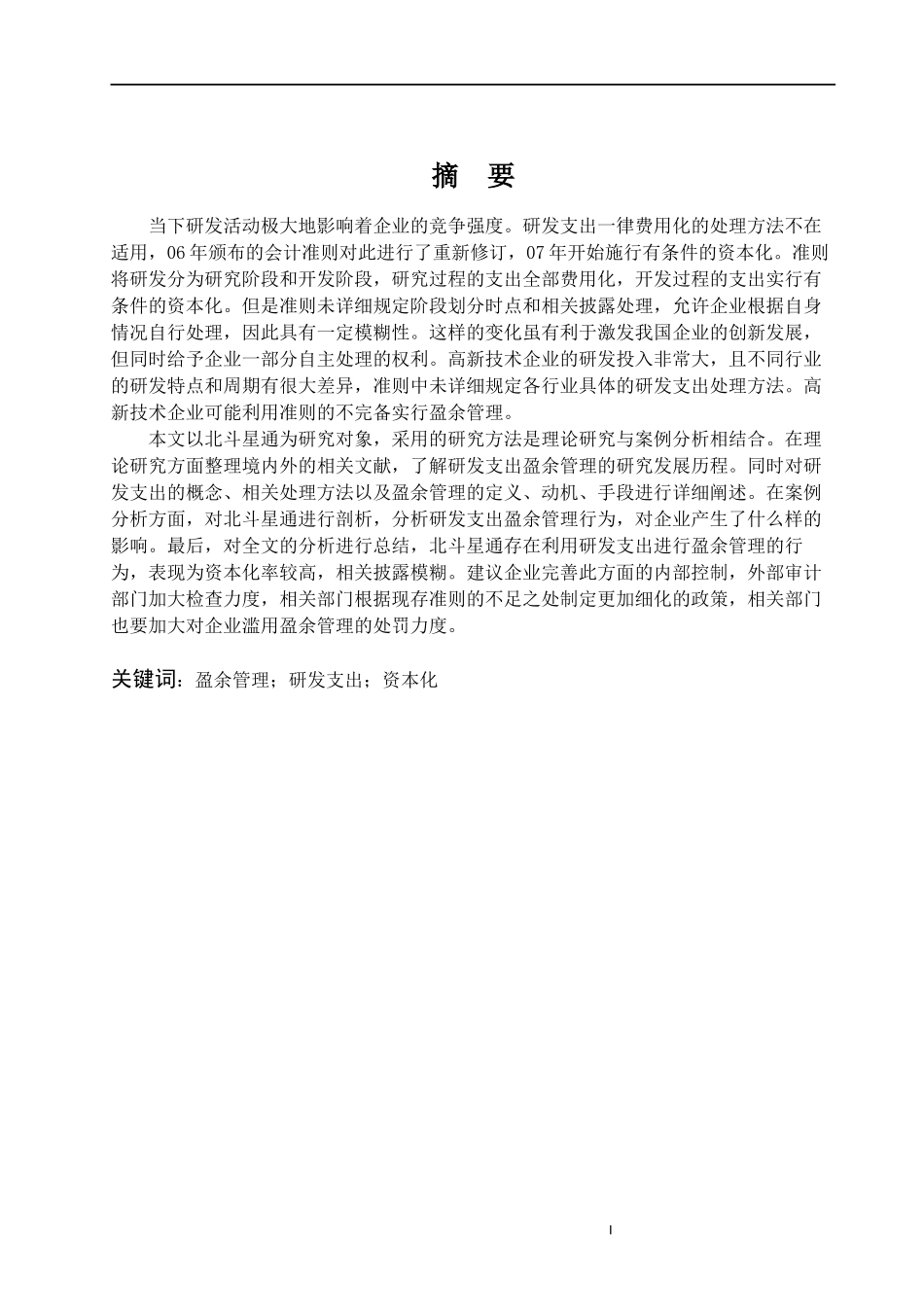I摘 要当下研发活动极大地影响着企业的竞争强度。研发支出一律费用化的处理方法不在适用,06 年颁布的会计准则对此进行了重新修订,07 年开始施行有条件的资本化。准则将研发分为研究阶段和开发阶段,研究过程的支出全部费用化,开发过程的支出实行有条件的资本化。但是准则未详细规定阶段划分时点和相关披露处理,允许企业根据自身情况自行处理,因此具有一定模糊性。这样的变化虽有利于激发我国企业的创新发展,但同时给予企业一部分自主处理的权利。高新技术企业的研发投入非常大,且不同行业的研发特点和周期有很大差异,准则中未详细规定各行业具体的研发支出处理方法。高新技术企业可能利用准则的不完备实行盈余管理。本文以北斗星通为研究对象,采用的研究方法是理论研究与案例分析相结合。在理论研究方面整理境内外的相关文献,了解研发支出盈余管理的研究发展历程。同时对研发支出的概念、相关处理方法以及盈余管理的定义、动机、手段进行详细阐述。在案例分析方面,对北斗星通进行剖析,分析研发支出盈余管理行为,对企业产生了什么样的影响。最后,对全文的分析进行总结,北斗星通存在利用研发支出进行盈余管理的行为,表现为资本化率较高,相关披露模糊。建议企业完善此方面的内部控制,外部审计部门加大检查力度,相关部门根据现存准则的不足之处制定更加细化的政策,相关部门也要加大对企业滥用盈余管理的处罚力度。关键词:盈余管理;研发支出;资本化 AbstractBefore 2006, all R&D expenditure in China was expensed. With the development of economy, such accounting standards can not adapt to the development of enterprises in China. The Accounting Treatment of R&D expenditure has been revised in the enterprise accounting standards issued in 2006, and the conditional capitalization of R&D Expenditure has been implemented. The guidelines divide the R&D PROCESS INTO TWO PHASES: The research phase and the development phase. The expenditure in the research phase is fully expensed, and the expenditure in the development phase is capitalized if the conditions are met. However, the guidelines do not specify the stage of time points and related disclosure pr...












